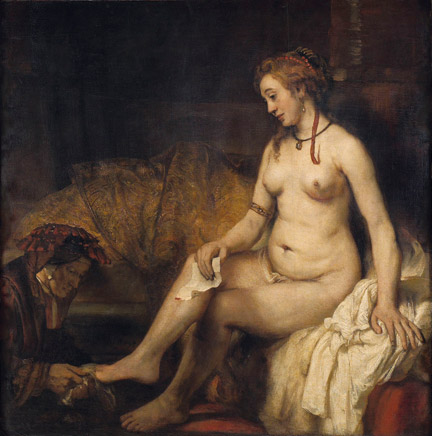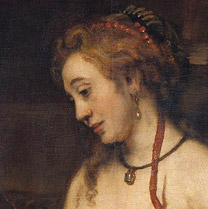Inner conflict
In his later years, Rembrandt shifted his narrative tactics. Rather than employ multiple figures to tell a story, he focused on a single character and explored their contemplative and introspective states.

Rembrandt’s painting of ‘Bathsheba with King David's Letter’ tells the Old Testament story of King David who was infatuated with Bathsheba. He summoned her to his palace, in spite of her being married to the warrior Uriah. Rather than include the figure of King David, as most artists did, Rembrandt conveys the essence of the story in the King’s crumpled letter and in Bathsheba’s reaction to its contents.


Through his sensitive rendering of Bathsheba’s sombre expression and downcast gaze, Rembrandt conveys the serious dilemma she is faced with: choosing between loyalty to her husband or obedience to her King.

